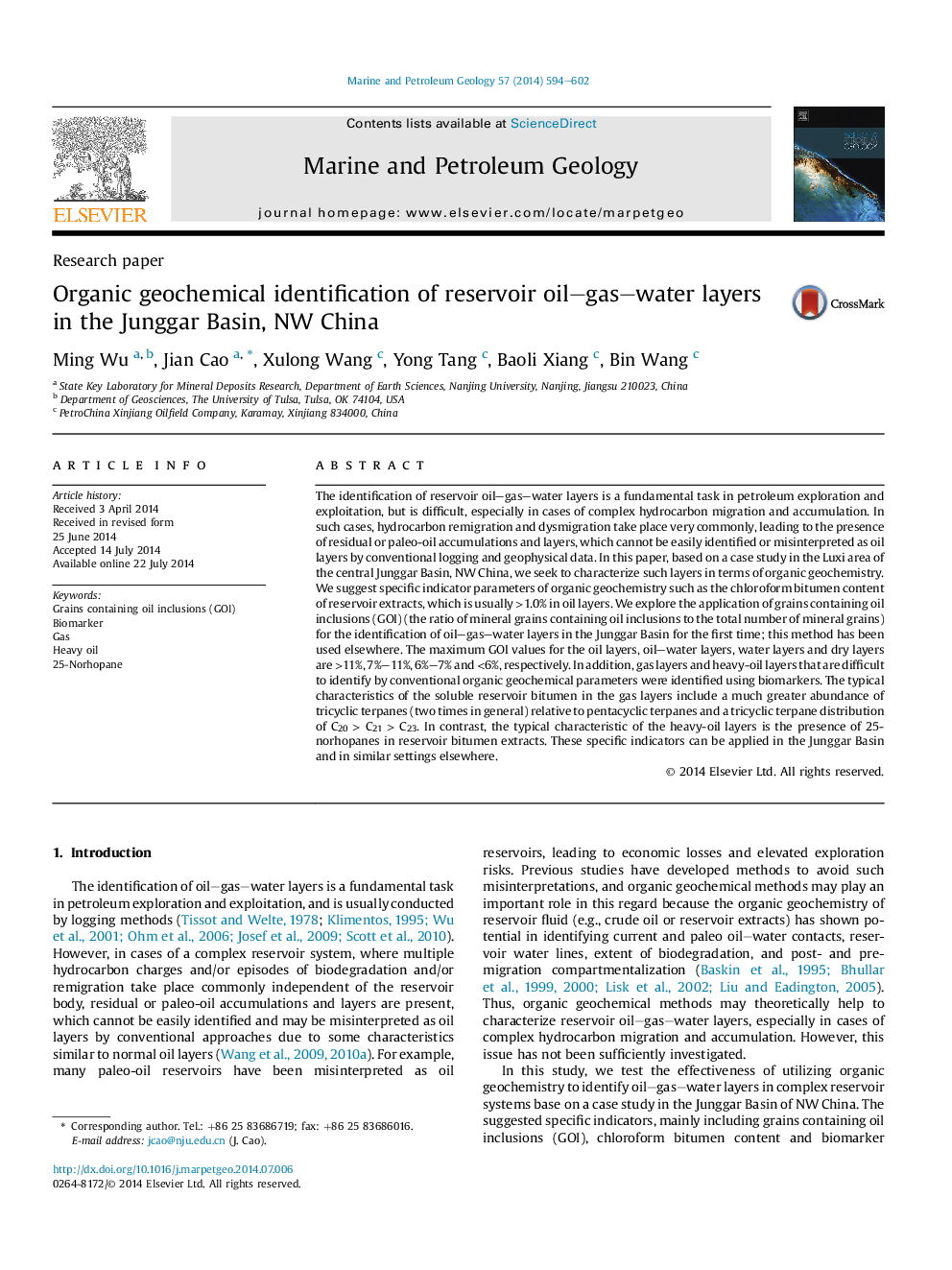| کد مقاله | کد نشریه | سال انتشار | مقاله انگلیسی | نسخه تمام متن |
|---|---|---|---|---|
| 6435405 | 1637167 | 2014 | 9 صفحه PDF | دانلود رایگان |

- Organic geochemical identification of reservoir oil-gas-water layers.
- Conventional distinguishing standards vary in different regions.
- GOI parameters were utilized for the first time in the Junggar Basin.
- Gas and heavy oil layers could be identified by biomarkers.
The identification of reservoir oil-gas-water layers is a fundamental task in petroleum exploration and exploitation, but is difficult, especially in cases of complex hydrocarbon migration and accumulation. In such cases, hydrocarbon remigration and dysmigration take place very commonly, leading to the presence of residual or paleo-oil accumulations and layers, which cannot be easily identified or misinterpreted as oil layers by conventional logging and geophysical data. In this paper, based on a case study in the Luxi area of the central Junggar Basin, NW China, we seek to characterize such layers in terms of organic geochemistry. We suggest specific indicator parameters of organic geochemistry such as the chloroform bitumen content of reservoir extracts, which is usually >1.0% in oil layers. We explore the application of grains containing oil inclusions (GOI) (the ratio of mineral grains containing oil inclusions to the total number of mineral grains) for the identification of oil-gas-water layers in the Junggar Basin for the first time; this method has been used elsewhere. The maximum GOI values for the oil layers, oil-water layers, water layers and dry layers are >11%, 7%-11%, 6%-7% and <6%, respectively. In addition, gas layers and heavy-oil layers that are difficult to identify by conventional organic geochemical parameters were identified using biomarkers. The typical characteristics of the soluble reservoir bitumen in the gas layers include a much greater abundance of tricyclic terpanes (two times in general) relative to pentacyclic terpanes and a tricyclic terpane distribution of C20Â >Â C21Â >Â C23. In contrast, the typical characteristic of the heavy-oil layers is the presence of 25-norhopanes in reservoir bitumen extracts. These specific indicators can be applied in the Junggar Basin and in similar settings elsewhere.
Journal: Marine and Petroleum Geology - Volume 57, November 2014, Pages 594-602